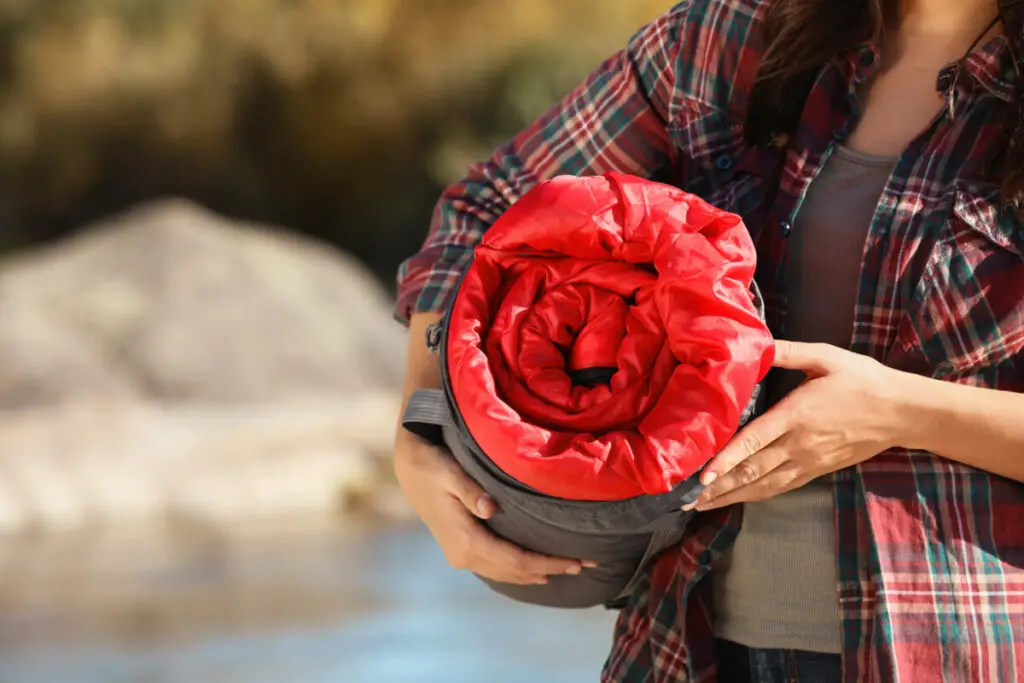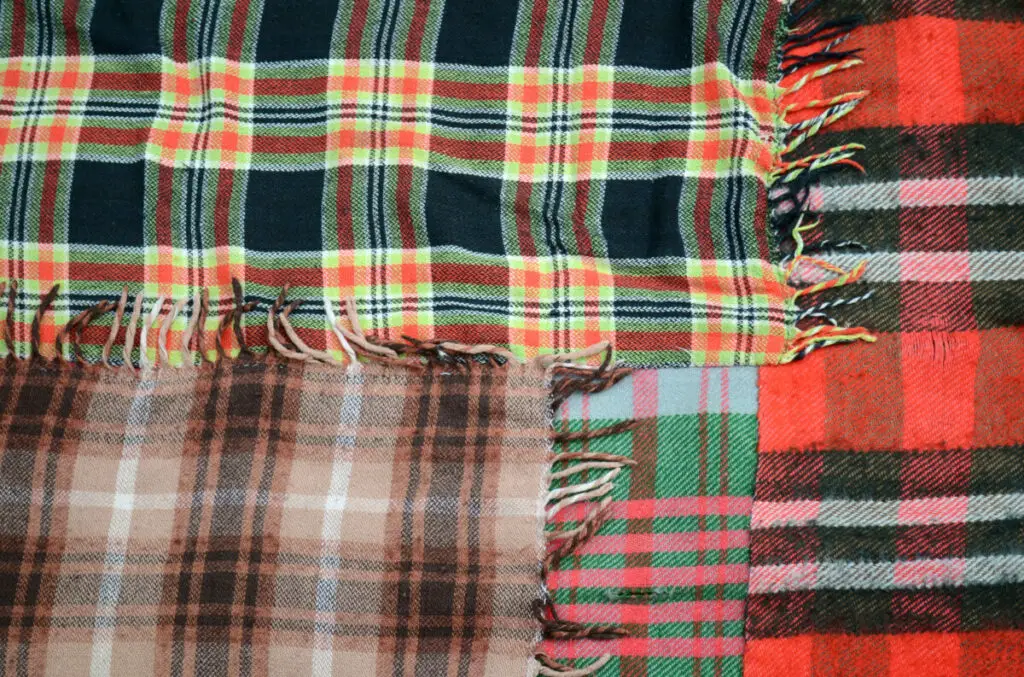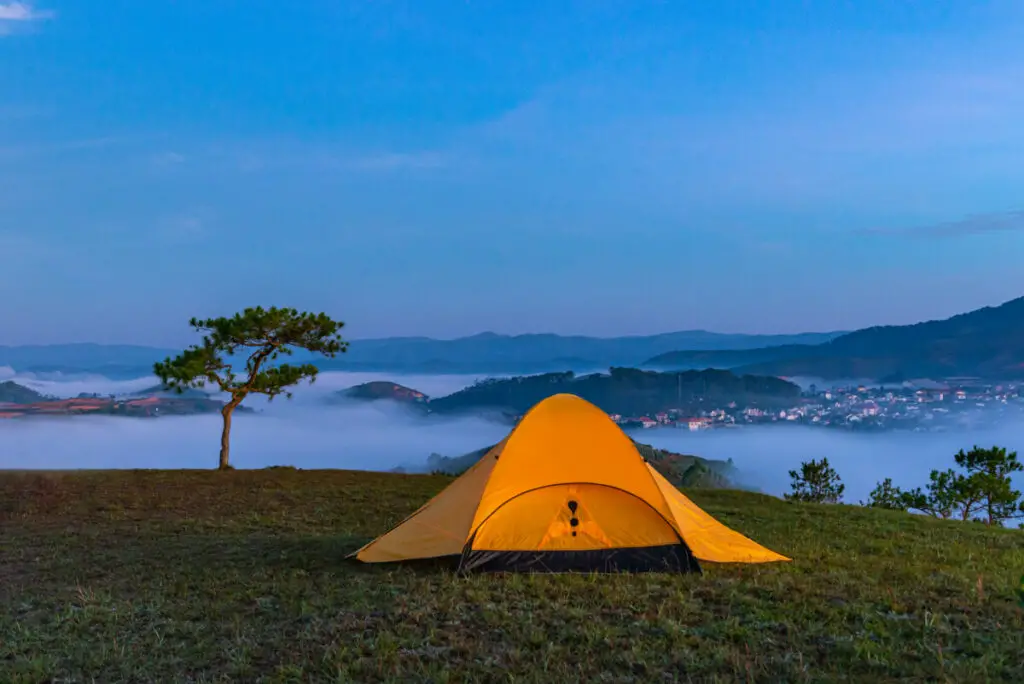
While sleeping bags are a warm, cozy, cherished memory for many people, they can be miserable for anyone suffering from claustrophobia. Those people need a solution they can rely on if they want to be able to sleep while camping.
Instead of using a sleeping bag while camping, people who experience claustrophobia can use camping quilts, wool blankets, two-person sleeping bags, extra spacious sleeping bags, or keep their sleeping bag unzipped. Additional warm clothing can be worn while sleeping to augment these alternatives.
Safety is paramount when camping, and that includes making sure everyone sleeps well without panic attacks. Keep reading below for a thorough guide on sleeping bags and claustrophobia.
What Can a Claustrophobic Person Use to Sleep in While Camping?
The biggest camping concern for a claustrophobic person is keeping warm while sleeping. Even a warm environment can cool down quickly as you sleep, and a frigid night is a miserable night. What are some alternatives to a mummy-style sleeping bag?
Wool Blankets
Wool blankets are something that many people love to use while camping. They’re scratchy, but they are also warm, water-resistant, fire-resistant, and very durable. A good wool blanket will outlast many sleeping bags.
Wool blankets also have a historic precedent in camping! For all of history before the invention of modern sleeping bags, wool blankets were a reliable solution to cold camping nights. They could be stacked, layered with canvas, used as a coat, and brought home to use in bed. They don’t get holes burnt or melted in them if you sleep beside a fire, and they don’t get mildewed easily if you’re camping somewhere damp.
For maximum warmth, use a sleeping mat or layer something under your wool blanket. Pine branches or more blankets are historically preferred materials. Alternatively, dress in warm layers of clothing to sleep, and your blanket should provide a nice final layer of insulation.
Wool blankets can also be used on top of sleeping bags if you choose an option that isn’t as insulated, which will likely be the case when camping with claustrophobia.
Camping Quilts
A high-quality camping quilt is another thing recommended on online forums for claustrophobic campers. Warm, insulated, and with a wide range of materials, camping quilts are great for ultralight backpacking in climates that are going to stay above freezing.
If the temperatures are going to drop below freezing, try combining the quilt with a more insulating option like a wide sleeping bag or an unzipped sleeping bag, along with layers of warm clothing and a wool hat.

Two-Person or Other Large Sleeping Bags
Ultralight camping forums agree that this is their favorite option for claustrophobic campers. Companies like Zpacks and Enlightened Equipment offer sleeping quilts and alternative shapes for sleeping bags that have been voted more comfortable by campers who have claustrophobia. They have the low weight, warmth, and materials that make sleeping bags so valuable, without the mummy-like shape that can make sleeping bags so unpleasant for claustrophobia.
However, campers should keep in mind that part of the warmth sleeping bags provide comes from the traditional mummy-wrap shape. Two-person and wider bags provide less insulation, which can be a problem in the cold.
If you’re attempting ultralight camping, this is probably still the best option for you.
Unzipped Sleeping Bags
If you have mild claustrophobia and just need a little more wiggle room, you might find that simply unzipping your sleeping bag provides all the space you need. You can unzip it partially, leaving space for your arms, or unzip it fully so your legs have space, too.
This is a solution that’s best suited for warmer climates. An insulated sleeping bag will not be able to perform to the specifications needed if it is open. Covering the sleeping bag with a camping quilt or warm blanket will help mitigate this problem.
DIY Creative Solutions
If you’re crafty or sufficiently motivated, you can take a page from history’s book and design your own sleeping solution. For example, you could go the old Cowboy route and combine wool blankets with canvas, leaving you with a warmer and more windproof sleeping square. Alternatively, you can use safety pins to combine down comforters for a camping trip.
Remember that you won’t have official numbers for how effective these homemade sleeping bags will be, so don’t try them for the first time in extreme conditions. Test them safely and with a backup option available. If it doesn’t work out, you can always try again.
Are There Any Sleeping Bags That Are Roomy Enough to Be Comfortable?
Larger sleeping bags do exist, and they can be a good option for some claustrophobic campers! If simply being able to wiggle your arms and legs is enough to keep you comfortable, this could be the solution for you.
The North Face Dolomite One Duo sleeping bag can stay warm and cozy in temperatures as low as 15°F, but it can also strip layers to stay comfortable in warmer weather. Additionally, it has a wraparound zipper that allows you to open it completely for particularly warm or claustrophobic nights. That level of flexibility is a great asset to have while camping.
The Big Agnes Dream Island 15 sleeping bag is a little different, with a more rounded shape and without the modular design of the North Face bag. One of the best things about this bag is that it is designed to attach to your sleeping bag, preventing it from tangling up and stressing a claustrophobic camper in the middle of the night. If you tend to toss and turn, this could be the sleeping bag for you.
What Are Alternatives to Classic Sleeping Bags?
Some alternatives to sleeping bags include:
- Wool blankets
- Camping quilts
- Multiple layers of clothing
- A homemade alternative sleep sack
- Double-wide or two person sleeping bags
Remember that any of these options can be mixed and matched to your comfort level. Make sure that your choice is adequate for the environment where you want to camp.
What Is the Lowest Temperature You Can Camp in before You Must Use a Sleeping Bag?
Like many camping questions, the answer to this depends on the weather conditions and your experience level. Are you making a fire to help support wool blankets? Is it windy or snowing? Do you have clothing sufficient to keep you warm? What about a buddy who can help you out if you get too chilled while experimenting with options?
Many bushcrafters, a group that is likely to camp in uncomfortable conditions, agree that an inexperienced person should use a sleeping bag for any camping below freezing. Their reasoning is that wool blankets and camping quilts can only go so far without fire or other insulation, many people don’t have the experience to camp comfortably with these options, and the weather can turn dangerously cold for an inexperienced camper.
For a more experienced camper, the low limit depends on your situation and your creativity. After all, people survived for thousands of years without modern sleeping bags and technology. Stay safe and use common sense.
What Would Make Camping Easier for a Claustrophobic Person?
Camping is full of stressors for a claustrophobic individual. Tents, forests, and sleeping bags are all potential stressors that are hard to avoid. What are some things that could make camping easier for an individual with claustrophobia?
Camp in Warmer Weather
This single change will make a huge difference in the comfort level of claustrophobic campers. Warmer weather allows for greater choice in tents, unzipped sleeping bags, or even just sleeping under a blanket and the open sky. On the other hand, cold weather means camping in layers of clothing and insulated sleeping bags, which can feel suffocating.
A best-case scenario for a claustrophobic camper would be a comfortably cool night with no rain, a roomy tent with a mesh ceiling offering a great view of the sky, and a camping quilt and sleeping mat instead of a sleeping bag. Doesn’t that sound relaxing?
Camp in Open Spaces
Claustrophobia can have a cumulative effect. If you’re already feeling compressed, like if you’re walking through a canyon or a dense forest, you’ll have less tolerance for sleeping bags and tents later on. Leave yourself some breathing room and practice camping in places like plateaus, deserts, and plains, or in campsites where you can see around you. If you must use a less comfortable sleeping bag, balance it out by trying tentless camping.

Be Open to Unconventional Ideas
One camper on a forum for claustrophobic backpackers reported that simply keeping a pocket knife in his sleeping bag was enough to help him relax. The idea that he’d be able to cut his way out if trapped was plenty. It was unconventional, yes, but it was also harmless and allowed him to sleep in a warm sleeping bag. Ideas like this are not something that needs to be shut down!
If you have an out-of-the-box solution that would allow you to feel safe and comfortable in a sleeping bag, it doesn’t harm you or anyone else, and it is realistic to use while camping, go for it! Nobody said you need to wear socks in a sleeping bag.
Get A Meditation Recording and Practice
If you can practice using a comfortable sleeping bag in a calm, safe, quiet environment with a meditation or hypnosis recording, you might find that you can start to physically relax in that sleeping bag after a while. This has helped people with other phobias like blood, dentists, or heights, so it might help you!
Yes, it probably sounds weird, but how much do you need to use that sleeping bag? If you want to camp somewhere that you absolutely must have the insulating protection of a sleeping bag, it’s worth giving this a try.
Get a Perscription Anti-Anxiety Medication for the Nights You Camp
This is something that absolutely should not be done if you’re camping alone, or if you’re camping in a dangerous area that requires serious dexterity. However, many people recovering from phobias have found that taking a prescription anti-anxiety medication, short or long term, can help them start to enjoy favorite activities or live their lives fully again. Just like taking valium before the dentist, you can talk to your doctor to see if you should try short or long-term medication to help you enjoy camping again.
How to Decide on the Best Option for You
Claustrophobia can present a little differently for everyone. No option is one-size-fits-all. What this means for you is that you’ll need to think about your situation, your available options, and your past experiences, and then try out whatever you think will work. You may need to try a few different things before you find the right fit.
Think About Past Camping Trips
Have you ever been camping before? If you have, think carefully about what you could improve on. Maybe you needed to kick your legs a little more. Maybe you just needed to keep your arms out of the bag. Maybe you’ll want to focus on camping in the summer when all you need is a mosquito net! You’re the expert on your own situation, and you can make some notes on what you need next time you camp.
Be Totally Honest with Yourself
It’s easy to compromise or think “it won’t be that bad” when you’re shopping. You might even feel embarrassed and try to justify a less-comfortable sleeping bag alternative because you think you can tough it out.
Don’t do that. You don’t want to put yourself in a compromising position or risk a panic attack when camping! There is no shame in needing to accommodate claustrophobia, especially when you’re engaging in a healthy activity like camping. Get what you need and set yourself up for success.
Experiment With Options before You Camp
Experiment with your sleeping supplies in your living room or backyard before you actually go camping.
Beyond just helping you get comfortable setting up your gear, this gives you the possibility of troubleshooting problems when you’re not in the middle of the desert. If you roll out of blankets, if you get tangled up in that big sleeping bag, or if you hate wearing layers of clothes, you want to find out about it while a solution is just a shopping trip away.

